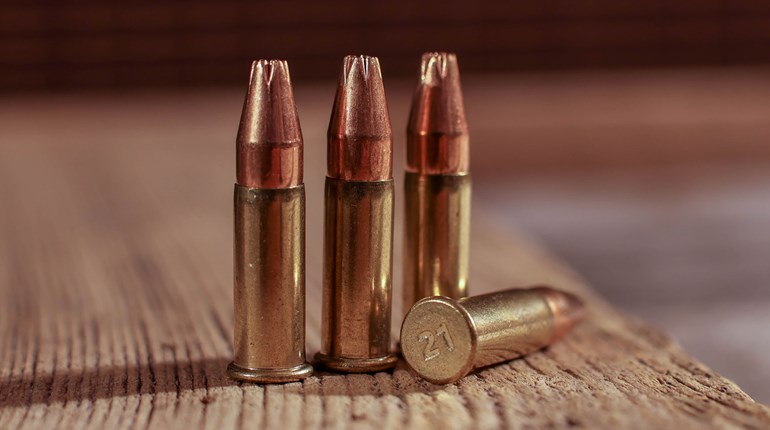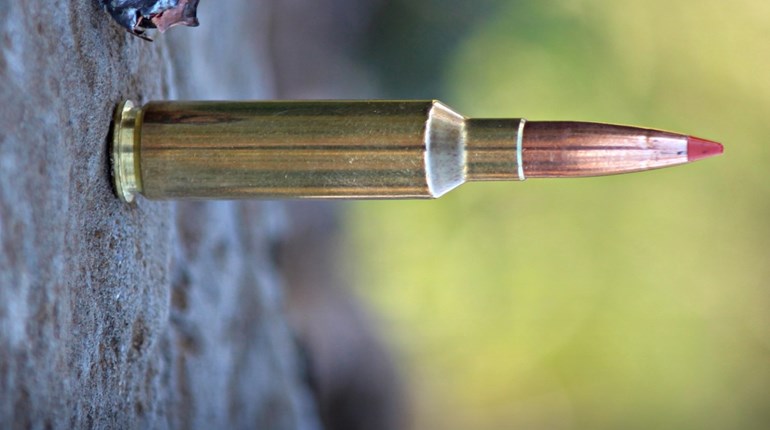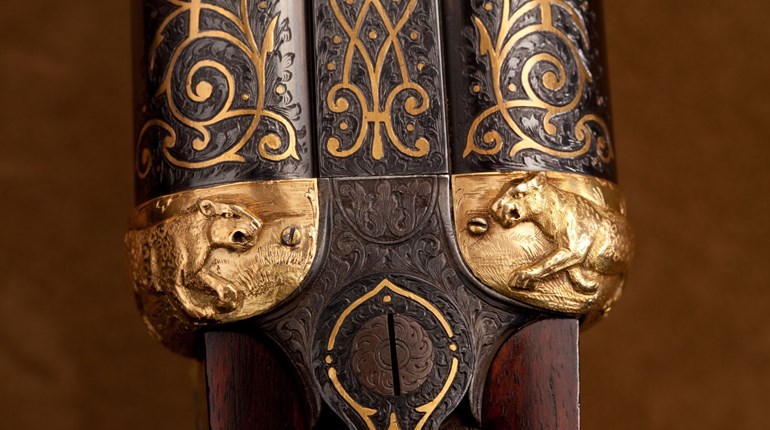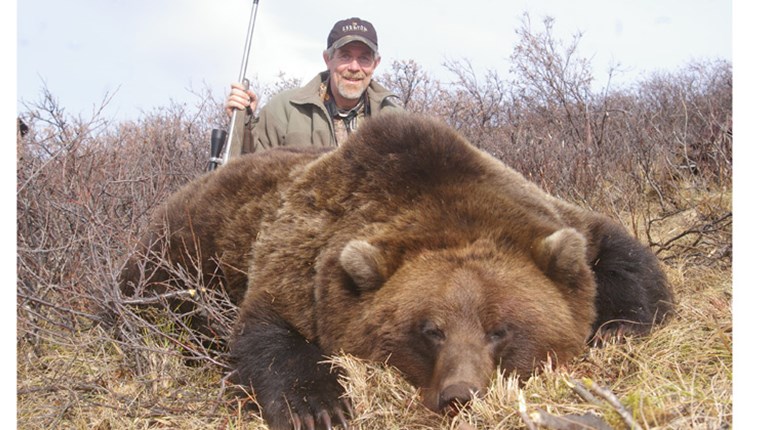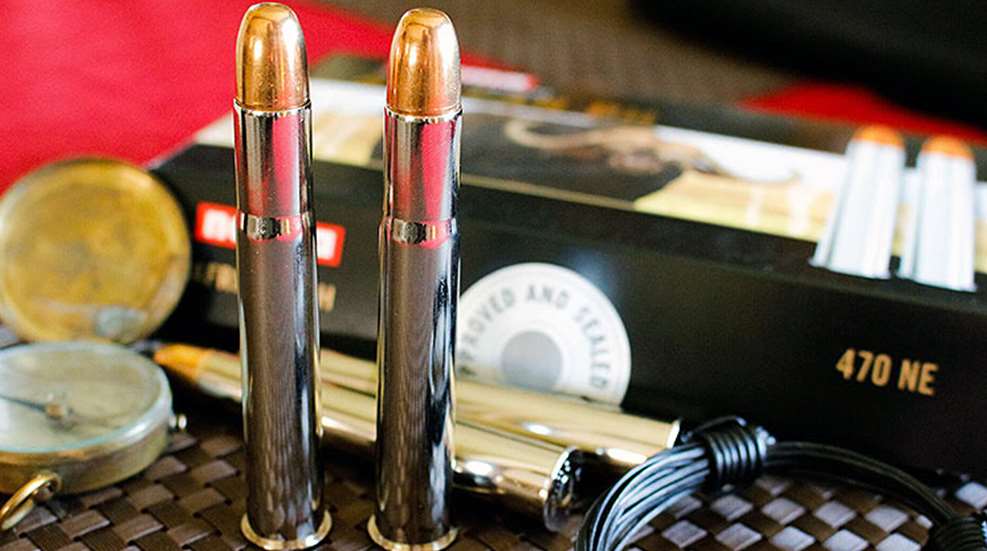
The huge Australian water buffalo bull was lying down, chewing his cud as we made a painfully slow approach, the distance closing from fifty to thirty to fifteen yards. Professional Hunter Graham Williams turned slowly, as we approached the last of the paperbark trees, and indicated it was going to happen quickly. We certainly had the wind, and we had used the cover wisely, but we were now within pistol range, let alone rifle. I tightened the grip on the Heym 89B double rifle, just a bit, and positioned my thumb on the textured safety catch, totally ready for the moment. The bull got up—never really presenting a shot that I’d have liked—and the big .470 double worked its magic; first the right barrel, then the left, and a couple more to pay the insurance. Over one ton of gray-black buffalo, with horns well-worn from age and caked in the pinkish-red mud he’d been rolling in, lay on its side, having been taken cleanly and quickly in the manner I prefer.
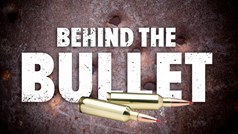 That huge cartridge—the .470 Nitro Express—has proven itself as a perfect choice for truly large game for over century now, and won’t be going away any time soon. It was born out of the insurgences in India and to a lesser degree Sudan, where native peoples turned the British .577/.450 Martini Henry rifles against their government, and as a result, the Crown banned any and all ammunition of .45 caliber in those countries—including the John Rigby designed .450 3¼” Nitro Express that had become the industry standard for large game. That .450 drives a 480-grain bullet at a muzzle velocity of 2150 fps, generating just under 5,000 ft.-lbs. of energy at the muzzle; this is all sorts of stopping power for any and all game animals. Many different cartridges were born out of this caliber ban, and all were trying to replicate that formula.
That huge cartridge—the .470 Nitro Express—has proven itself as a perfect choice for truly large game for over century now, and won’t be going away any time soon. It was born out of the insurgences in India and to a lesser degree Sudan, where native peoples turned the British .577/.450 Martini Henry rifles against their government, and as a result, the Crown banned any and all ammunition of .45 caliber in those countries—including the John Rigby designed .450 3¼” Nitro Express that had become the industry standard for large game. That .450 drives a 480-grain bullet at a muzzle velocity of 2150 fps, generating just under 5,000 ft.-lbs. of energy at the muzzle; this is all sorts of stopping power for any and all game animals. Many different cartridges were born out of this caliber ban, and all were trying to replicate that formula.
Joseph Lang—of London’s Grant & Lang—is credited with the development of the .470 Nitro Express—in production since 1907—using a 500-grain bullet of .474” diameter at a muzzle velocity of 2150 fps for 5,132 ft.-lbs. of energy. Using a bottlenecked, rimmed case of 3¼”—based on the .500 3¼” Nitro Express—the .470 gives the deep penetration and stopping power that big game hunters desire. Being designed primarily for double rifles, the 500-slugs are the most popular bullet weight for the .470, and almost the rifles made for this cartridge are regulated with this bullet weight. That’s okay, because those bullets have a lot to offer; they have a Sectional Density figure of .318—and anything with an S.D. value of over .300 is considered to be very good for dangerous game—and that large frontal diameter will leave a good wound channel. The solid, non-expanding bullets will handle the huge bones and thick skin of the largest game, including elephant, hippo and Cape buffalo; the soft point bullets work just fine for the first shot on buffalo and for just about anything else you’d use a soft point for.
Despite the fact that Kynoch—the biggest producer of the classic double rifle cartridges in their day—went out of production, thereby rendering many of the double rifles nearly useless, Federal Cartridge Company began to produce quality ammunition for the .470 in 1989, giving the cartridge—and the rifles—a new lease on life. Since Federal’s reintroduction, Hornady, Norma, Barnes, Nosler and others have produced good ammunition for this classic cartridge, giving us a wide selection of softs and solids. The Trophy Bonded Bear Claw, the Woodleigh Weldcore and Hydrostatically Stabilized Solid, the Barnes Banded Solid and TSX, the Hornady DGS and DGX are all available, giving the .470 a bit of a face lift. Many modern double rifles have been chambered for the .470, including the Heym 89B I got to use in Australia, the elegant Rigby Rising Bite, and many other bespoke rifles.
Handloading the .470 is a valid alternative to the costly factory ammunition, and is a straight-forward affair. It will run well on a variety of powders, though if you choose to use the faster burning powders—which have a lower charge weight—you will want a proper foam wad to keep the powder column in place. I’ve seen very good results with Alliant’s Reloder 15.
The recoil of the .470 NE is not for the faint hearted, though if the rifle is well proportioned it is completely manageable. The double I was shooting (and subsequently ordered its twin) had 26” barrels, weighed 11 pounds and balanced like a dream. The recoil was the classic push—similar to but greater than a .416 Rigby—rather than a violent slap. If you’re serious about getting a .470, make certain that the rifle fits you properly.
While not as affordable as a big bore bolt rifle, the experience of hunting in the wild places of the world with a well-balanced double rifle is a very special one. The immediate second shot can be very comforting when your quarry is measured in tons, and the possibility of being mauled, scratched or gored a very real one. A cartridge of the magnitude of the .470 will put an exclamation point on the end of your sentence.
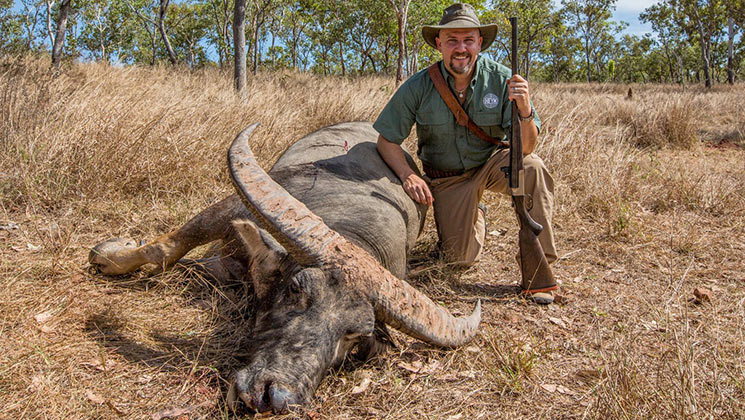
Looking for previous installments of Behind the Bullet? We've got you covered.
• .280 Remington
• .300 Winchester Magnum
• .270 Winchester
• .222 Remington
• .45 ACP
• .404 Jeffery
• .44 Remington Magnum
• .243 Winchester
• .338 Winchester Magnum
• .357 S&W Magnum
• 6.5-284 Norma
• 8x57 Mauser
• .38 Smith & Wesson Special
• 7x57mm Mauser
• 9 mm Luger
• .35 Whelen
• .454 Casull
• .375 H&H Magnum
• .45 Colt
• .22-250 Remington
• 10mm Auto
• .308 Winchester












